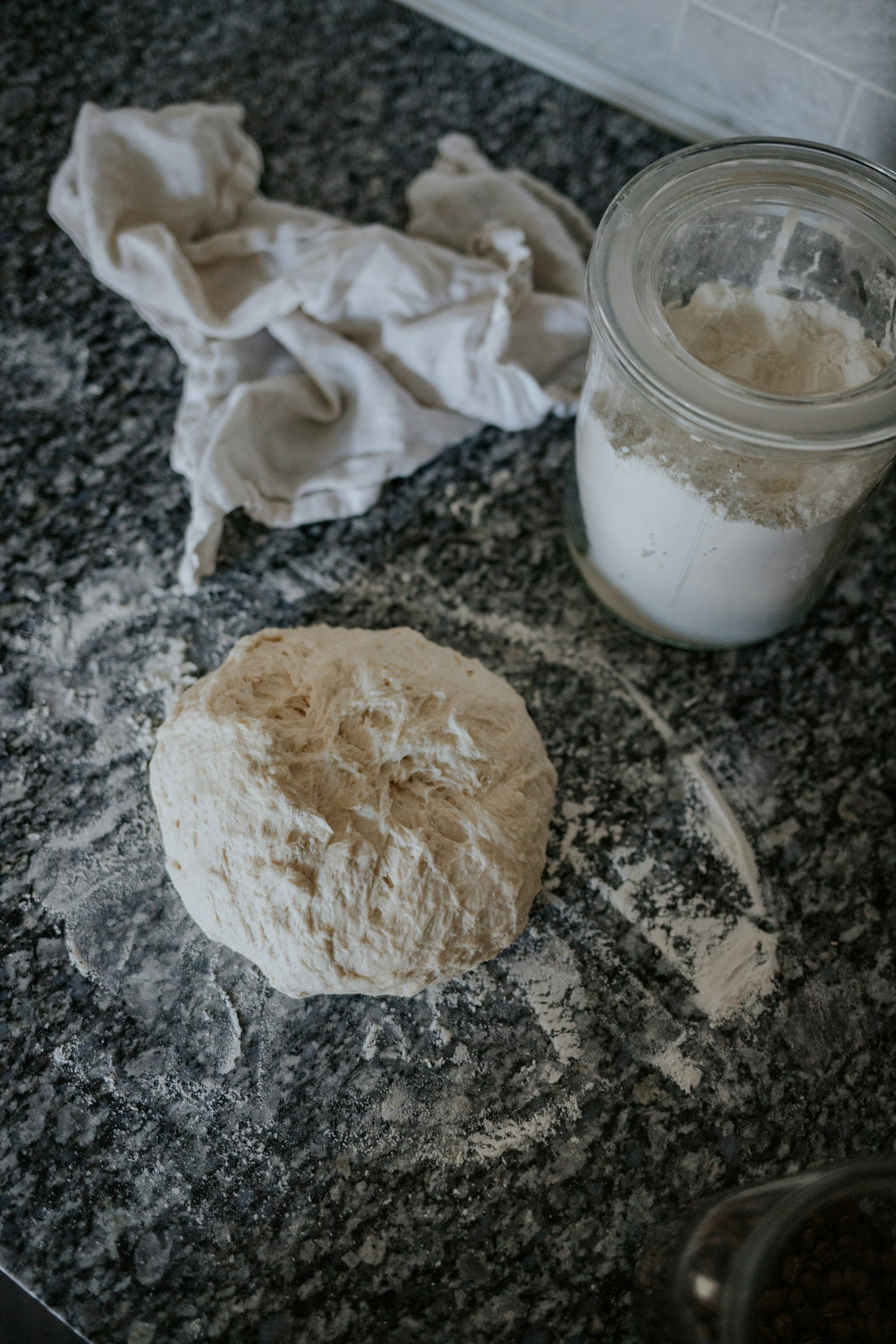
Beginner's Guide: How to Feed and Maintain Your Sourdough Starter
Welcome to the world of sourdough baking, a journey that marries tradition, science, and artistry into one delicious lifestyle. Whether you're here to master the craft of homemade sourdough, or you're curious about the health benefits of sourdough fermentation, you're in the right place. In this guide, we'll uncover the secrets of sourdough starters and provide you with all the knowledge needed to keep your vibrant wild yeast fermentation thriving.
What is a Sourdough Starter?
A sourdough starter is essentially a live culture of flour and water where wild yeast and lactic acid bacteria grow. This combination, known as wild yeast fermentation, is what makes sourdough distinct from bread made with commercial yeast. The mixture of wild yeast and bacteria contributes not only to the rise of the bread but also to its unique tangy flavor and chewy texture.
Sourdough Starter vs Yeast
While both sourdough and yeast serve to leaven bread, they function quite differently. Commercial yeast acts quickly and predictably, making it easier for bakers to control. Sourdough, on the other hand, takes its time— about 8-24 hours— to ferment, allowing flavors to develop more profoundly. The benefits of sourdough fermentation extend beyond taste, as they include improved digestibility and lower glycemic index, making sourdough an attractive choice for diabetics.
How to Feed and Maintain Your Sourdough Starter
Caring for your sourdough starter means maintaining a healthy balance of yeast and bacteria to ensure it remains active and viable for baking.
How to Feed Sourdough Starter
- Discard: Remove about half of your starter. This ensures the remaining starter gets enough flour and water to thrive and prevents overflow if stored in a small container.
- Feed: Add equal parts by weight of flour and water. For example, if you maintain 100 grams of starter, feed it with 50 grams of flour and 50 grams of water.
- Mix: Stir the mixture until it's smooth and incorporated. A dough whisk can be particularly effective here.
For beginners, a Sourdough Starter Kit like the 24 Oz Sourdough Container Silicone Spatula Thermometer Lid from ItalianSourdough.com can simplify the process, ensuring you have the essential tools at hand.
Sourdough Starter Feeding Schedule
- Daily Feeding: For those who bake frequently, daily feeding is ideal. It keeps your starter ready to bake at a moment's notice.
- Weekly Feeding: If you bake occasionally, keep your starter in the refrigerator and feed it once a week.
How to Store Sourdough Starter
Your starter can be stored at room temperature for daily use, or refrigerated for weekly feeding. When refrigerated, allow it to sit at room temperature for several hours before using, ensuring it’s active.
Sourdough Starter Troubleshooting
- Too Sour: If your starter is too sour, shorten the feeding interval or use it more frequently.
- Inactive Starter: If your starter isn't rising, it might need more frequent feedings or a warmer environment.
- Liquid on Top: When "hooch" appears, a greyish liquid, it’s a sign your starter is hungry. Simply pour it off and feed as usual.
Sourdough Baking Tips for Beginners
Baking sourdough can be as complex or as simple as you wish to make it. Here are some essential tips:
How to Bake Sourdough Bread
- Mix Your Dough: Combine your starter with flour, water, and salt. Use a dough whisk for an even mix.
- Bulk Fermentation: Let your dough rise in a warm spot for several hours. The dough should double in size.
- Shape the Dough: Turn the dough out onto a floured surface, fold it into a round, and cover it to rest.
- Proof and Bake: Place the ronded dough in a proofing basket for the final rise. A Lame Bread Proofing Basket Kit like the one from ItalianSourdough.com is perfect for this step. Bake in a preheated oven, ideally inside a Martha Stewart 7Qt Enameled Cast Iron Dutch Oven for that crisp crust.
- Cool: Allow bread to cool completely on a wire rack to finish cooking and set the crumb.
Best Sourdough Scoring Techniques
Scoring, or slashing, your dough is not only decorative but functional, allowing steam to escape and bread to expand properly. Use a sharp knife or a specialized tool like the Bread Lame Dough Score Cutting Tools for precise cuts.
How to Shape Sourdough Bread
- Creating Surface Tension: Gently pull the dough towards you to tighten the outer surface.
- Round or Oval?: Choose between classic boules (round) or batards (oval) depending on your preference.
Sourdough Bread Troubleshooting
- Not Rising Enough: Extend bulk fermentation or proofing time in a cooler environment.
- Dense Texture: Insufficient fermentation can lead to dense bread. Ensure adequate time and a warm spot for both steps.
- Tough Crust: For a softer crust, add steam during baking or reduce bake time.
Sourdough Starter Alternatives and Uses
- Sourdough Discard Recipes: Pancakes, waffles, and crackers are perfect ways to utilize discard.
- Sourdough Pizza Dough and Bagels: Add variety to your sourdough life by branching into these different dough flavours.
Sourdough vs Regular Bread
Sourdough's slow fermentation process not only creates profound depth in flavors but also enhances the nutritional profile by breaking down phytates, increasing mineral absorption, and offering easier digestibility— making it a preferred choice for those with digestive sensitivities or diabetic needs.
The Journey of Artisan Bread Baking
Starting with an organic sourdough starter grants you a sense of lineage, as each starter holds its own legacy and unique microbial community. Some people claim old-generation starters impart superior flavor and resilience, though anything cultivated at home holds its own magic.
Embrace this aromatic and tactile journey, equipped with the right tools and a curious mind. From the bubbling peaks of your sourdough starter to the satisfying crackle of a freshly-baked loaf, the world of artisan bread baking is rich with reward. Visit ItalianSourdough.com for all your sourdough needs and continue writing your sourdough story today.
